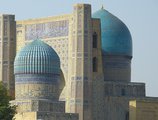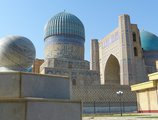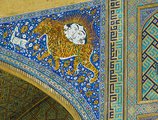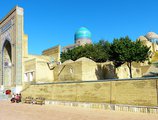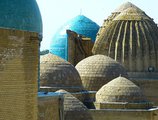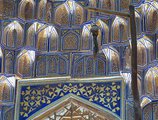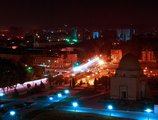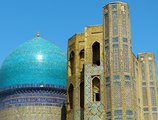The second largest city of Uzbekistan after the capital is Samarkand, the administrative center of the Samarkand region. The city is located in a very convenient place in the center of the republic.
For two thousand years, the city of Samarkand was an important center and trading point on the Silk Road. This metropolis is divided into three administrative districts: Siab, Bogishamal and Temiryul.
Among the cities of the world, Samarkand is one of the oldest. He is 2750 years old. The city of Samarkand was conquered by the soldiers of Alexander the Great, the troops of the Arab Caliphate, the Mongol hordes of Genghis Khan. After numerous destructions and fires, it again revived, grew, became the capital of the large Central Asian states.
In 1334-1335 the construction of the necropolis of Shahi Zinda 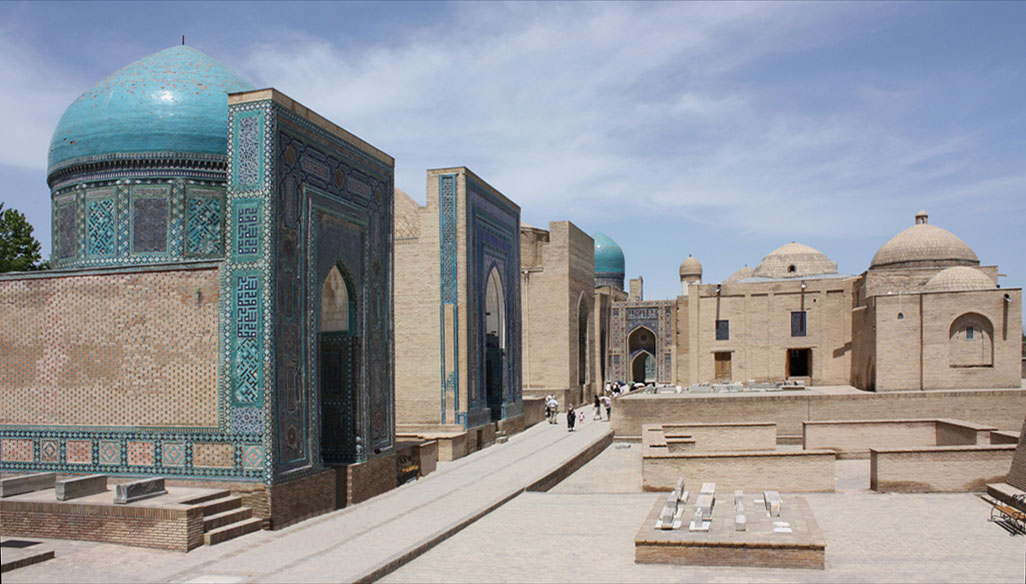 began in Afrosiab, and the mausoleum of Kusama ibn Abbas was rebuilt. The interior of the mausoleum was decorated with turquoise glazed terracotta, at the door between Zayrat Khan (divine service) and Gur Khan (room with a tombstone) a wooden lattice was installed, Timur ordered an excellent majolica tombstone.
began in Afrosiab, and the mausoleum of Kusama ibn Abbas was rebuilt. The interior of the mausoleum was decorated with turquoise glazed terracotta, at the door between Zayrat Khan (divine service) and Gur Khan (room with a tombstone) a wooden lattice was installed, Timur ordered an excellent majolica tombstone.
The construction of the necropolis reached the greatest prosperity in the last quarter of the 14th century, when they began to build mausoleums for members of the Timur family, military leaders and nobles. Some buildings of the Shah-i-Zinda ensemble date from the first half of the 15th century, the time of Ulugbek. These include a simple portal (1434-1435) at the foot of the Afrosiab hill and a mausoleum with two highly raised turquoise domes above the slope of the hill, as it is supposed, over the grave of the astronomer Kaza-zade-Rumi, the teacher of Ulugbek.
The open space in front of the Kazy-zade-Rumi Mausoleum was replaced by a narrow passage built on both sides by the graves of the family of Timur Emir-zadeh, Tuglu-Tekin, Shadi-Mulk-aka (Turkan-aka) and Shirin-Bika aka.
The mausoleum of Shadi-Mulk-aka (1372) and her mother, Timur's sister, Turkan-aka, survived better than others. A truly inexhaustible variety of artistic means in the art of ceramic facings Shahi-3inda! Terracotta with carved floral, geometric and epigraphic ornaments, covered with colored glaze, and majolica make up the lining of most of the mausoleums of this complex.
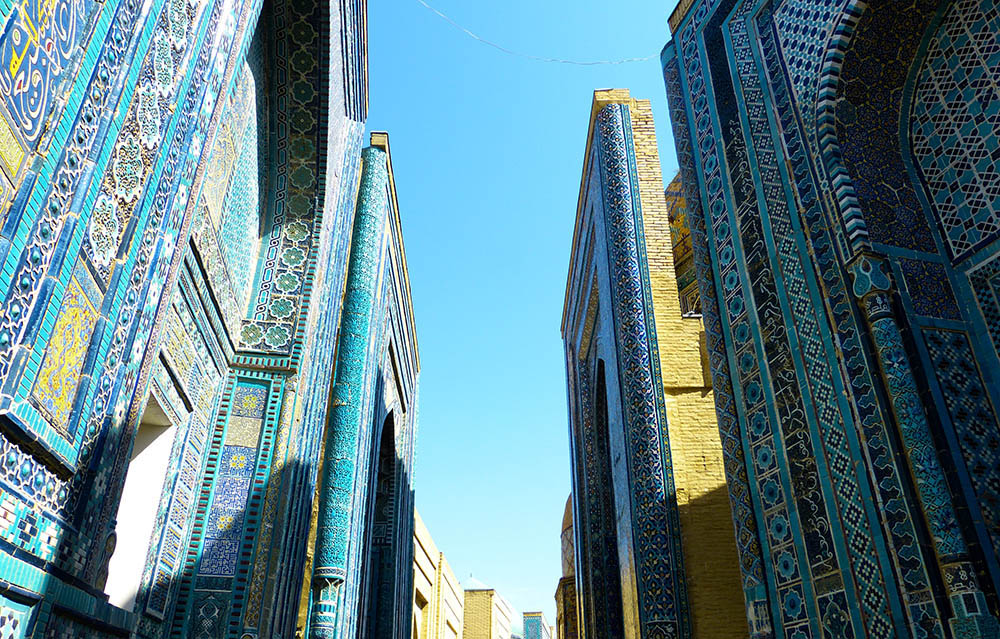 The colored glazed lining "Shahi-Zinda" is unique. But not only they testify to the talent of the creators of the ensemble. Builders who had succeeded in each other for over a century, working on various buildings, managed to unite the buildings into a single architectural ensemble with great artistic tact.
The colored glazed lining "Shahi-Zinda" is unique. But not only they testify to the talent of the creators of the ensemble. Builders who had succeeded in each other for over a century, working on various buildings, managed to unite the buildings into a single architectural ensemble with great artistic tact.
At the end of the XIV century, Samarkand became the capital of the vast empire of Timur, the subject of his special concerns. The city of Samarkand was redesigned and built with numerous buildings. An ambitious ruler was looking for the construction of large monumental buildings to confirm the idea of his power. In 1399, returning from an expedition to India with huge looted treasures, Timur began the construction of a Friday mosque.
With extraordinary haste for five years (1399-1404),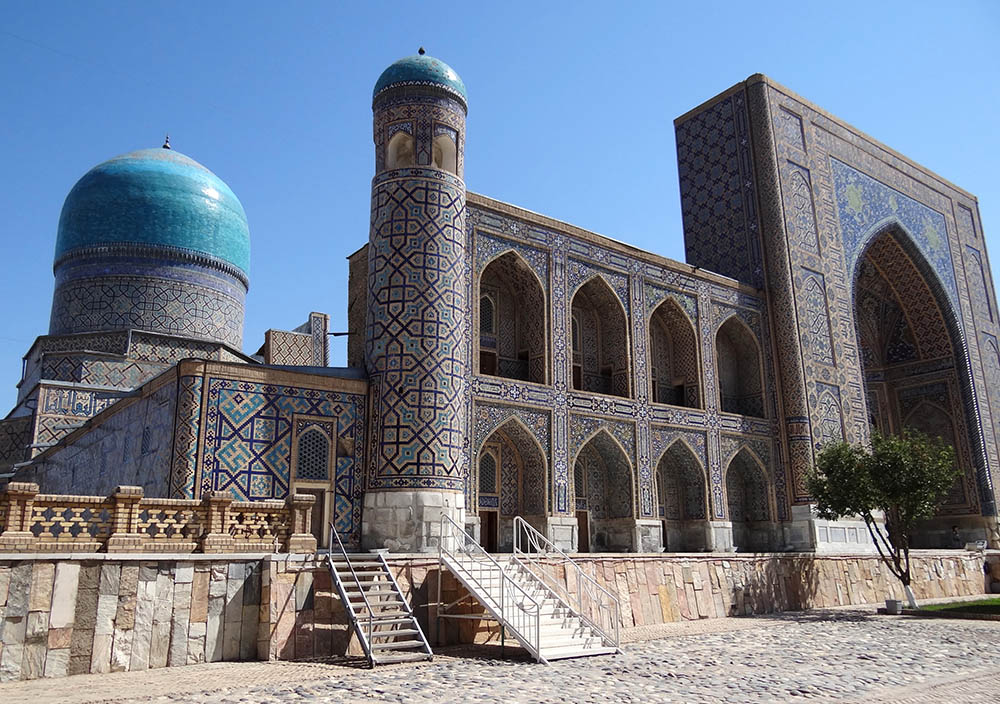 the Bibi-Khanim Mosque, as it was later called, was erected.
the Bibi-Khanim Mosque, as it was later called, was erected.
One of Timur’s last buildings in Samarkand was the Gur-Emir Mausoleum (1403-1404), intended for his beloved grandson Muhammad-Sultan, but served as his grave, his sons and grandson Ulugbek.
At present time Samarkand now one of the beautiful cties of Uzbekistan and is a multinational city. Both Uzbeks and Tajiks, Russians, Iranians and many others live here.
Carefully studied and restored archaeological and historical monuments of Samarkand organically entered into its modern look, which is formed by new buildings and squares, hotels and neighborhoods of residential buildings. Carrying a great educational and aesthetic value, architectural monuments of the past enrich modern Samarkand.
Samarkand entered the World Heritage List of mankind in 2001.

